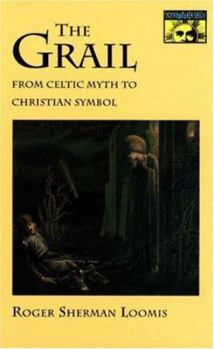The Grail: From Celtic Myth to Christian Symbol
Select Format
Select Condition 
Book Overview
The medieval legend of the Grail, a tale about the search for supreme mystical experience, has never ceased to intrigue writers and scholars by its wildly variegated forms: the settings have ranged... This description may be from another edition of this product.
Format:Paperback
Language:English
ISBN:0691020752
ISBN13:9780691020754
Release Date:October 1991
Publisher:Princeton University Press
Length:312 Pages
Weight:0.85 lbs.
Dimensions:0.8" x 5.5" x 8.5"
Related Subjects
Arthurian Romance Christian Books & Bibles Church History Churches & Church Leadership Criticism & Theory England Europe Fairy Tales Folklore & Mythology Gothic & Romantic History History & Criticism Literature & Fiction Medieval Movements & Periods Mythology Mythology & Folk Tales Politics & Social Sciences Religion Religion & Spirituality Social SciencesCustomer Reviews
1 rating
Fascinating theory of the Grail
Published by Thriftbooks.com User , 18 years ago
After "From Ritual To Romance" caused a sensation (positive and otherwise) among grail scholars in the early part of the 20th century, much scholarship relating to Arthurian myth relates to the discourse over its origins. In "The Grail: From Celtic Myth to Christian Symbol," Roger Loomis convincingly argues (as the title might suggest) that the idea of the Holy Grail has its roots not in apocryphal Christian eschatology but in the Celtic myths of the British Isles. From the knights of the round table to Indiana Jones to Heinrich Himmler and everyone in between, the Grail has been a much sought-after artifact. The only question is "what is it?" According to Loomis, the Holy Grail is not the cup from which Jesus drank at the Last Supper, but rather a mistranslation of the archaic compound word "sankgreal," meaning "royal blood" rather than "holy grail." This will sound familiar to anyone familiar with the novel "the Da Vinci Code," but this is more or less where the similarities end. Loomis does not view the Grail as an essentially literal object and says that it refers to a mythical bloodline. He further objects to the characterization of the grail as a cup, showing that before it was identified as a chalice, it had previously been portrayed as a flat dish and even a rock (!). He says that myth of the Fisher King lay in Celtic mythology and that Christian symbolism was later attached to it when the Grail myth hit continental Europe from a French monk and scholar living in Wales. The concept of the grail as an ever-replenishing source of sustenance is based on another linguistic misinterpretation that has an archaic Welsh word for "cup" being mistranslated into French as "body," as in the body of Christ (i.e. a communion wafer). Loomis illuminates a consistent series of parallels between the circumstances of Arthurian legend and Celtic myth and shows how overlapping stories in the former are based on archetypal forms from the latter. Why 4/5? While Loomis presents a compelling theory, it is complex and at times difficult to follow despite Loomis' effort to make his book as accessible as possible to the average reader. Likewise, there is a fair amount of redundancy in this book that might turn some people off. Finally, the theory is so complex and each part is so dependent on the assumption before it that if one aspect is successfully refuted, the whole theory would be in jeopardy. Still, it's a fine book that advances an intriguing hypothesis about one of Western Civilization's most enduring symbols and deserves a thorough examination.






